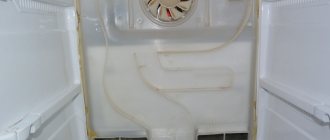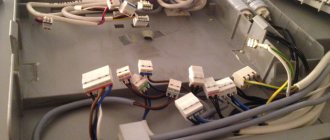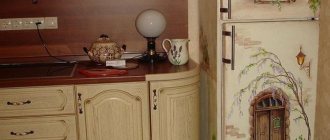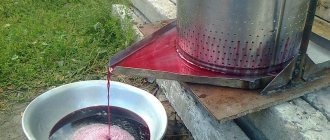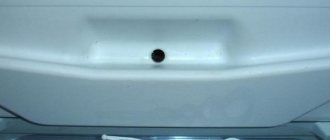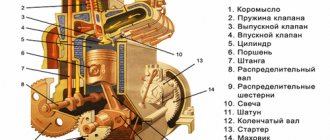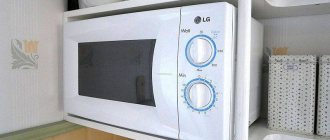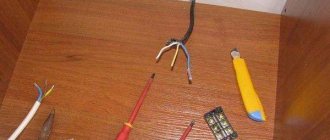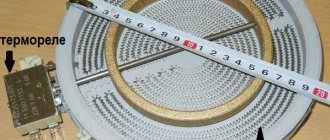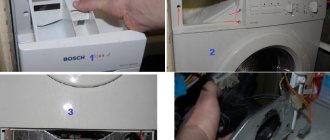The modern range of household appliances has practically erased the word “boiler” from our vocabulary. There are all kinds of coffee makers and electric kettles for office (and sometimes home) use. And if you find yourself in a hotel, service dormitory, or finally in a garage (in autumn or winter)? You can take this useful device with you.
However, most often at the right time there is no electrical appliance at hand to heat water, but you want to drink tea. Remembering my student days, a simple (albeit slightly dangerous) technology comes to mind: a boiler made of two blades.
Attention!
The information in this article is provided for informational purposes. Nowadays, there is no longer the concept of “scarcity” and inexpensive boilers, as well as kettles and other similar household appliances are sold everywhere. Do not put these methods into practice, buy a boiler in the store and use it!
Basic knowledge of a school physics course, and more often, adopting the experience of “older” generations, allows you to boil a glass of water in 1 minute, literally using available materials.
How it works
Electric current flows between points of different potentials. Of course, the medium must be conductive. Water is far from a dielectric; the resistance is quite low (unless, of course, it is a distillate). If you immerse two electrodes with a sufficient potential difference in a glass of water, the current strength will be very high. So much so that the heating temperature will cause the water to boil. For comparison, a similar current flows through the filament of an incandescent lamp. The metal becomes white hot.
Why doesn't a glass of water explode? The resulting steam bubbles are a kind of dielectrics that protect the system from short circuits. Let's not go into calculations of voltage and current, let's turn to practice.
How to make a homemade water boiler
Why blades, and not, say, spoons, nails, and other metal objects? Optimal balance of consumer characteristics.
- Firstly, this method has been around for decades, and in “those days” almost the entire male population shaved with a safety blade. The material was always at hand. So - traditions...
- Secondly, the surface area of the resulting electrodes was wonderfully suited to balance the characteristics. The load on the electrical wiring was not too high, and at the same time the water boiled quite quickly.
- Finally, the material. The blades are made of fairly high quality steel. They last a long time and practically do not pollute water.
Let's take a closer look at the last point. There is such a thing as electrolysis. When an electric current occurs between the electrodes in a liquid medium, particles of the material move along with the electrons. A significant part remains in the water, not reaching the opposite electrode. Naturally, this does not make the water any tastier, and if you have a homemade boiler made from nails, it is not suitable for drinking at all. So blades (especially high quality ones) are an ideal donor for the heater.
How to make a boiler with your own hands - the best proven methods
Most often, in artisanal conditions, boilers are made from:
- Razor blade. Blades Satellite.
- Nails.
- Heating element for a kettle.
Heating element from an old kettle
You can also make functional devices for heating water at home from nichrome wire, which is installed on a ceramic insulator.
The main task that must be accomplished when designing heating elements yourself is to minimize the possibility of short circuits and electric shock. When using low-voltage homemade products, there is little to fear from electric shock, but devices operating on a 220 V network can cause accidents and fire.
Manufacturing technology
We will need the following materials:
- Power cable with plug (preferably with a cross-section of at least 0.75).
- Two safety blades. The sharpness of the edge does not matter, usually just dull ones were used. It will be better if both electrodes are the same (for uniform wear). In the case of blades - one company, preferably from the same package.
- Dielectric for installation between blades. Matches were usually used. You cannot simply lower the electrodes in a freely suspended state. They may touch (moving while boiling) and a short circuit will occur.
- Thread for fixing structural elements. As practice has shown, this is the safest method of fastening. You can't use glue; the rest of the fasteners simply don't fit.
Assembling a homemade boiler from blades
We attach the stripped wires to both blades. Using solder is pointless, so we perform strong twisting. It is desirable that the exposed part of the wire is as short as possible. Remember about electrolysis.
Next, you need to fix the canvases at a short distance from each other. From 2–3 mm to 1–2 cm. The boiling speed depends on this, and as an inverse relationship, the power consumption. The farther the blades are from each other, the more economical the device. Accordingly, the longer the water boils.
Information:
In this case, efficiency is a colloquial concept. It takes the same amount of energy to heat a given volume of water to a given temperature, regardless of the distance between the blades.
This means that a low-power boiler simply will not put a large load on the network, but the meter will display the same value of electricity consumption.
There are two ways to assemble a boiler with your own hands. Install a match dielectric gasket and tie the structure with threads.
This is the most common design: the boiler is powerful and quickly heats the water. Power requires a good outlet and reliable wiring. This connection is reliable and the appliance is designed for repeated use.
The second option is easier to assemble and does not require threads. However, this is rather a one-time scheme - the “mount” is unreliable. But you can assemble such a boiler in a maximum of 5 minutes.
Advantages: no risk of short circuit, lower power consumption. At the same time, the water takes longer to heat up.
Options with blades may sometimes not be suitable because the current and power will be too low. You will have to wait up to an hour for boiling.
Such “heating devices” are called student, or prison, based on their main places of application. Having certain skills, you can use such a boiler to cook dumplings (of course, in a glass jar; a metal pan will create a short circuit). And boiling water for tea is generally a piece of cake.
Classic homemade blades
We immediately draw your attention to the fact that an electric boiler made from blades is very dangerous. They must be used with extreme caution. It is strictly forbidden to heat water in a metal container or salty liquids or solutions with such a device. Otherwise, electric shock or electric shock may occur. the wires are exposed in the water. One more point - it is recommended to use this homemade product only for heating water for bathing; for brewing tea, it is better to make a boiler according to the previous instructions, since when the device is operating, a small amount of metal salts from which the blade is made gets into the water.
So, let’s look at the process of assembling the device step by step with photo examples. First of all, prepare a two-core cable with a plug. If you don’t have a ready-made one at hand, use a two-wire one by screwing a collapsible electrical plug on one side. It is advisable to take a wire with a cross-section of at least 0.75 mm2. to avoid heating it up.
After this, we strip the cores and screw them to the blades, trying to do this as tightly and securely as possible, as shown in the photo below:
We tie the entire structure with threads, make sure the connection is correct, after which we can check. Perform the first start with extreme caution.
As a rule, water in a three-liter glass jar heats up in a few minutes.
You can clearly see the manufacturing technology in the video below:
By the way, using a similar scheme, you can make a boiler with your own hands from bolts, stationery knife blades, spoons, nails, or even metal plates. The operating principle and wiring diagram will be similar. The main thing is to ensure that there is no contact between the two blades (or whatever you have), otherwise a short circuit will occur.
That's all I wanted to tell you about how to make a boiler with your own hands at home. Still, we strongly recommend using only factory-made products, or even better, an electric kettle, which will be much safer. We have provided these step-by-step instructions for informational purposes, and these methods can be used in practice only in extreme situations when there is no alternative.
In life, sometimes unforeseen circumstances arise. One of these is the lack of hot water, for example, during repair work, when there is no gas, without which you cannot boil water. And then, out of spite, the electric kettle broke, and there is no boiler in the house at all. Then we begin to think about how we can make a boiler with our own hands at home. It turns out that making such a heating device is not at all difficult, the main thing is to find the necessary materials in your apartment.
A homemade boiler or a primitive 12-volt heating device can be made from available materials
.
For this we need:
- An insulated piece of two-core wire.
- Blade, which is used for a razor in the amount of 2 pieces. You can also use a paint knife blade. If you don’t have any in your apartment, even two metal spoons will do.
- A saucepan or jar for water.
- Two matches or wood chips.
- Threads.
1 option
. You need to attach a wire to the ends of the blades. The blades should not be allowed to touch each other. To do this, we install spacers made of matches or wood chips between them on both sides. Then you should wind the blades with thread. The wires should also not touch. You just need to place a homemade 12-volt boiler in a container of water, plug it into the outlet and wait until it boils.
Option 2
. When using a metal container to boil water, one wire can be connected to the pan, and a blade, spoon, or other available metal object can be attached to the other end. It is important to ensure that the latter does not touch the walls of the metal container. This turns out to be a 12 volt boiler.
A self-made boiler with a power of 12 volts copes with boiling a small amount of water quite quickly.
It is important to follow safety precautions
when using this heating device:
- Before you are going to use a homemade boiler, you must carefully check all the connections of the structure for strength.
- Under no circumstances should you put your hands in the water while heating the liquid (you may get an electric shock).
- Do not leave the heating device turned on unattended.
- Don't risk boiling salt water. Otherwise, you will cause an explosion, causing most of the water to splash out of the container.
- Do not use this design for more than a month. And also think about the quality of the water you are going to drink. Due to the ingress of metals into it, the water becomes of poor quality.
Alternative options
Another donor for contacts is heels for army boots and combat boots.
They are assembled in the same way as from blades: threads, matches. The performance and power are similar. Since the metal is of relatively high quality, water boiled with their help can be drunk.
Fastening elements can serve as a “garage” alternative. Two bolts are screwed into a piece of plastic, the issue of connecting wires is solved reliably and elegantly: simply tighten the nuts. “Electrodes” are located at a distance of 5 cm.
The efficiency of this design is very high: a liter jar boils in less than a minute.
The only problem is hygiene. Finding stainless steel bolts is quite difficult, and galvanized models quickly lose their coating, again due to electrolysis. Therefore, this option is more suitable for technical heating of water than for food purposes.
Use of "semi-finished products"
If you have a heating element from an electric kettle or boiler, just attach the power wires to it, and the “factory boiler” is ready. But this design does not relate to the question “how to make a boiler with your own hands,” since the main element is manufactured industrially. Nevertheless, home craftsmen often use spare parts from damaged electrical appliances.
Important:
When assembling such a boiler, soldering cannot be used. Only the terminal connection of the supply wire.
From the heating element of the kettle
You can also assemble a boiler from an unnecessary electric kettle, provided that the heating element is in working order. In this case, you don’t need to come up with anything extra - you will need the heating element itself and a cord with a plug. First, check the integrity of both parts of the electrical device using a multimeter.
Rice. 7: Check with a multimeter
Ring the cord and heating element, if they are in good working order, then they can be safely used to make a boiler.
To connect the terminals of the heating element, it is more convenient to use terminal clamps, but if you don’t have these on hand, you can use a regular soldering iron.
To make a boiler, follow these steps:
- disassemble the kettle and remove the heating element from it, do the same procedure with the stand and remove the cord from it; if the cable is long enough, you can simply cut it at the base.
- using a knife or wire cutters, remove the insulation from the edges of the wire;
- secure the terminal clamps to the contacts of the heating element using a screwdriver;
- on the other side, connect the stripped wires of the cord to the terminals;
Rice. 8: connect the wires to the heating element - Use a multimeter to check the boiler circuit and the resistance between the terminals of the plug and the housing.
Rice. 9: ready-made boiler from heating element
The boiler is ready, it can be used both for heating technical water and for boiling drinking water. In terms of its operating parameters, it is no different from a classic kettle or boiler, so it can also be used in metal containers. Due to the fact that the heating device uses a factory heating element, you get a fairly powerful boiler.
Homemade 12 volt boiler
Despite the fact that there are various options for electric kettles and boilers for use in cars, making a 12-volt boiler with your own hands is not so easy. It is impossible to create a heating element on your own, unless you use PEV ceramic resistors.
In addition, with a boiler power of 300 W, a current of 25 amperes will be required. Too much for a battery. However, the resistor resistance for such a boiler can be calculated using the formula:
where P is the required power in Watts, and R is the resistance in Ohms. For example, if a power of 300 W is required, then a 0.5 Ohm resistor is needed. If you cannot find one, then you can connect two 1 Ohm resistors in parallel. Let us recall that with a parallel connection the resistance is divided by the amount, and with a series connection it is multiplied.
The main problem is that it will not be possible to obtain high-quality drinking water, since the water will come into contact with the electrical product.
Car boiler for 12 v and 24 v Volt
When making long trips, vehicle drivers (be it a KamAZ driver or a passenger car owner) often encounter long hauls, along the entire length of which there are no cafes and quite a few gas stations where you can order a hot drink.
Therefore, to invigorate yourself with hot coffee or tea on the road, using an auto-boiler would be an excellent option.
Device types:
- In the shape of a spiral;
- In the form of a glass.
It is worth noting that to heat liquid in a car, you can also use a gas burner, an integral part of which is a gas cylinder. But it is important to understand that this type of device is quite expensive.
Spiral devices, in their design and operating principle, are practically no different from conventional boilers. Power is supplied to these devices via the cigarette lighter.
The boiler is immersed in a container of water and connected to the connector. It is important to understand that it is unacceptable to remove the device from the container while it is on. Such boilers have a number of specific features.
For example, being quite compact and lightweight, they can be stored in any convenient place. But the inability to cover the container with a lid when boiling water leads to the fact that the water begins to splash out.
The best option for a water heater for a car is to use a device in the form of a mug or glass. This device is equipped with a heating element, which is located in the lower part, which allows you to cover the glass with a lid.
There are several varieties of such products that operate on 12 and 24 volts. Some models can be connected to a USB connector.
